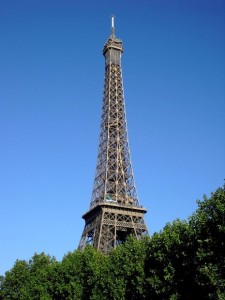3 Books to Read Before Your Trip to Paris
Posted on January 20th, 2015by
In French | Leave a Comment »

Photo by Wayne Shipley/Flickr
Everyone plans a trip differently, and there is no ‘right way’ to get ready to leave home, whether it’s for a weekend or for several years. When you’re preparing for your journey, don’t just look at guidebooks; try to read some prose about the city or country you’re planning on visiting. You’ll find you might just learn so much more from a novel set in Paris, than in a guide book! Here is our list of 3 books to read while you’re preparing for your trip.
Paris to the Moon by Adam Gopnik.
Paris to the Moon is a novel that will show you what it’s like to navigate the streets and arrondissements (districts) of Paris through the eyes of an American, and the eyes of a new father. This book will give you a good feel of the city as a whole, as Gopnik’s descriptions of bistros, parks, and the beautiful Parisian streets are both entertaining and accurately written.
This book is both funny and sweet, and carefully takes you on a stroll through the city, woven together with the everyday aspects of life that exist everywhere; doing laundry, making dinner, cleaning dirty diapers. These short essays will have you choked up, giggling, and pausing for review on what Gopnik says about life, parenting and Paris. It’s quite interesting to see the city covered by an American’s viewpoint, contrasting the cultural norms with a man’s need to try and get by while still attempting to enjoy all of the finer things the beautiful city has to offer. Give this one a try to set the stage for a particularly long or cultural trip, as its essays resonate with you for ages to come.
A Year in the Merde by Stephen Clarke.
A Year in the Merde is a funny novel that will teach you all about Paris from an Englishman’s point of view. This story follows Paul West – a young man who has been hired by a company to create an authentic English tea room chain. He falls in love easily, and explores the city with the eyes of someone who both loves and hates the place and the culture. As the reader you can watch Paul become entranced with beautiful French women and amazing French food, and caustically hate things like ordering coffee, arguing with his bosses laissez-faire attitude, and trying to motivate French employees.We follow his journey of assimilation, and see the discord he feels on a trip home.
This is a great book to read for the cultural and language aspects of Paris travel. Stephen Clark paints an accurate and relatively current portrait of the city, and a colourful rendition of the people in it. His trials and tribulations will have you shaking your head and laughing, (sometimes at the same time!). You’ll learn some pretty interesting slang, along with some great tourist actions and sites to completely avoid. All in all, a great book for someone heading to the city.
The Elegance of the Hedgehog by Muriel Barbery.
Set in Paris, and the majority of the story takes place in a luxury Parisian apartment building. The two protagonists are Renee Michel, a 54 year old concierge that works in the building where Paloma Josse, a 12 year old genius lives. Paloma is unhappy and hides her talents because she feels as if she is vastly different from everyone around her. Judged by others to be short, stupid, fat and insignificant, she is really hiding a keen mind, and an amazingly profound wisdom. Renee and Paloma find each other after a wealthy Japanese gentleman moves into the building and highlights their contradictions. It’s a sweet book, with laughs and tears sprinkled throughout.
This book will give you an interesting viewpoint on the French class system, and the general way in which much of French society functions, in terms of people and the places they fall into. You can see the difference highlighted particularly by the alternation of narrators; the novel switches between Paloma and Renee. You’ll also pick up some interesting vocabulary and insights into elements of French culture that you may not have the opportunity to experience or see otherwise!
With images of Paris and your newly acquired French vocabulary, why not see what classes we have available to get set on your journey to fluency ?




















